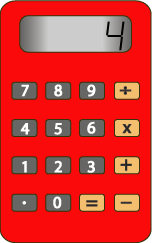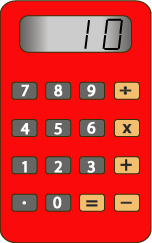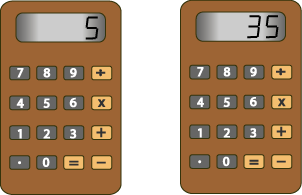Or search by topic
Number and algebra
Geometry and measure
Probability and statistics
Working mathematically
Advanced mathematics
For younger learners
Secret Number



- Problem
- Getting Started
- Student Solutions
- Teachers' Resources
Secret Number
This is a game for two players and a simple calculator.
Annie and Ben are playing. Annie puts her secret number into the calculator without showing Ben.
Annie then asks Ben, "What do you want to add?"
Ben tells Annie the number he wants to add. "I want to add four."
Annie presses the 'add' button and then the four button. The calculator now shows '$4$'. Annie gives the calculator to Ben.

Ben presses the 'equals' button and the calculator gives the answer '$10$'.

What was Annie's secret number?
How do you know?
You could play this with a friend. If you work out your friend's secret number correctly, it is your turn to put in a secret number of your own. You could score a point for every one you get right.
A multiplication version of the game might go like this:
Charlie puts in a secret number and asks Dana, "What do you want to multiply it by?"
Dana replies, "Multiply it by $5$."
Charlie puts in 'times' and '$5$' and hands the calculator to Dana.
When Dana presses the 'equals' button the calculator shows '$35$'.

Dana now has to work out Charlie's secret number. What was it?
How do you know?
Try playing this version with your friend too!
Why do this problem?
This game is a good one to play with young children once they are familiar with the basic number operations. They will like the idea of their number being "secret", and of course being able to work out someone else's "secret" number! Looking for a ''secret'' number is the basis for algebra and solving unknowns in equations. So as well as enjoying what they are doing, your class will be engaging with some important mathematical ideas.
Possible approach
A good way to start might be for you either to enter your own secret number and invite the class to suggest what to add, or perhaps ask two children to come to the front to demonstrate. This activity will create a great opportunity for rich discussion amongst the class about how they can work out the secret number. You could ask the children to think for themselves first, then share their ideas with a partner and finally with the whole group. (Think-pair-share.)
Key questions
Possible extension
The best extension for this is for children to play the game with a partner as they are invited to do in the original problem. For some, there need be no limit to the numbers or operations involved. However, it would be a good idea to get all "secret" numbers and working out recorded!
Possible support
Use a calculator openly with the children so that they can see exactly what is happening. When they understand the mechanism of the game then start using a "secret" number with very simple numbers. Learners could also use a number line or multiplication square to help.
You may also like
Let's Investigate Triangles
Vincent and Tara are making triangles with the class construction set. They have a pile of strips of different lengths. How many different triangles can they make?

